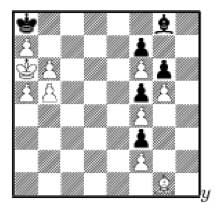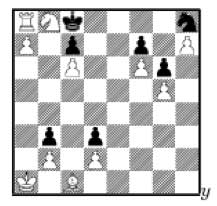Noam Elkies is one of
those persons I seem to bump into (figuratively speaking) wherever my
interests take me. At the moment I’m reading (long overdue, I
know, I know) the excellent book Notes on
Fermat’s Last Theorem by Alf Van der
Poorten. On page 48, Elkies figures as an innocent bystander in the
1994 April fools joke e-perpetrated by
Henri Darmon in the midst of all confusion about ‘the
gap’ in Wiles’ proof.
There has
been a really amazing development today on Fermat’s Last Theorem.
Noam Elkies has announced a counterexample, so that FLT is not true
after all! He spoke about this at the institute today. The solution to
Fermat that he constructs involves an incredibly large prime exponent
(larger than $10^{20}$), but it is constructive. The main idea seems to
be a kind of Heegner-point construction, combined with a really
ingenious descent for passing from the modular curves to the Fermat
curve. The really difficult part of the argument seems to be to show
that the field of definition of the solution (which, a priori, is some
ring class field of an imaginary quadratic field) actually descends to
$\\mathbb{Q}$. I wasn’t able to get all the details, which were
quite intricate…
Elkies is also an
excellent composer of chess problems. The next two problems he composed
as New Year’s greetings. The problem is : “How many shortest
sequences exists (with only white playing) to reach the given
position?”
$\\begin{position}
\\White(Kb5,Qd1,Rb1,Rh1,Nc3,Ne5,Bc1,Bf1,a2,b2,c4,d2,e2,f3,g3,h2)
\\end{position}{\\font\\mathbb{C}hess=chess10 \\showboard
}xc $
Here’s Elkies’ solution
:
There are 2004 sequences of the minimal length 12.
Each consists of the sin- gle move g3, the 3-move sequence
c4,Nc3,Rb1, and one of the three 8-move sequences
Nf3,Ne5,f3,Kf2,Ke3,Kd3(d4),Kc4(c5),Kb5. The move g3 may be played at
any point, and so contributes a factor of 12. If the King goes
through c5 then the 3- and 8-move sequences are independent, and can
be played in $\\binom{11}{3}$ orders. If the King goes through c4 then
the entire 8-move sequence must be played before the 3-move sequence
begins, so there are only two possibilities, depending on the choice
of Kd3 or Kd4. Hence the total count is $12(\\binom{11}{3}+2)=2004$ as
claimed.
A year later he composed the
problem
$\\begin{position}
\\White(Kh3,Qe4,Rc2,Rh1,Na4,Ng1,Bc1,Bf1,a2,b2,c3,d3,e2,f4,g2,h2)
\\end{position}{\\font\\mathbb{C}hess=chess10 \\showboard
}xd $
of which Elkies’ solution is
:
There are 2005 sequences of the minimal length 14.
This uses the happy coincidence $\\binom{14}{4}=1001$. Here White
plays the 4-move sequence f4,Kf2,Kg3,Kh3 and one of the five
sequences Nc3,Na4,c3,Qc2,Qe4,d3,Bd2(e3,f4,g5,h6),Rc1,Rc2,Bc1 of
length 10. If the Bishop goes to d2 or e3, the sequences are
independent, and can be played in $\\binom{14}{4}$ orders. Otherwise
the Bishop must return to c1 before White plays f4, so the entire
10-move sequence must be played before the 4-move sequence begins. Hence
the total count is $2 \\binom{14}{4}+3 =
2005$.
With just a few weeks remaining, anyone in for
a 2006 puzzle?
 The problem is to give an infinite sequence
The problem is to give an infinite sequence